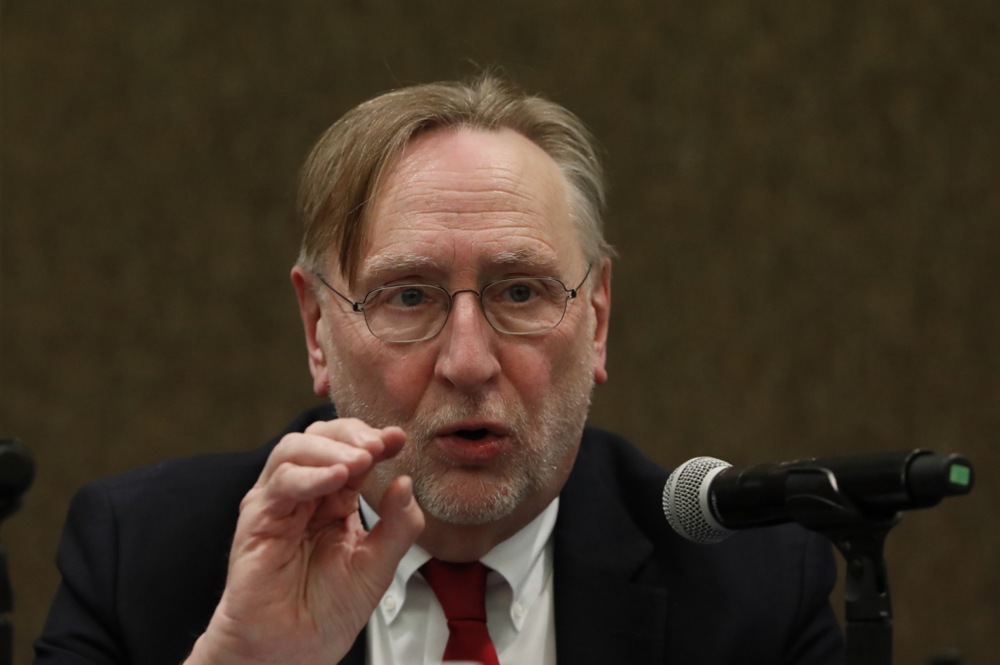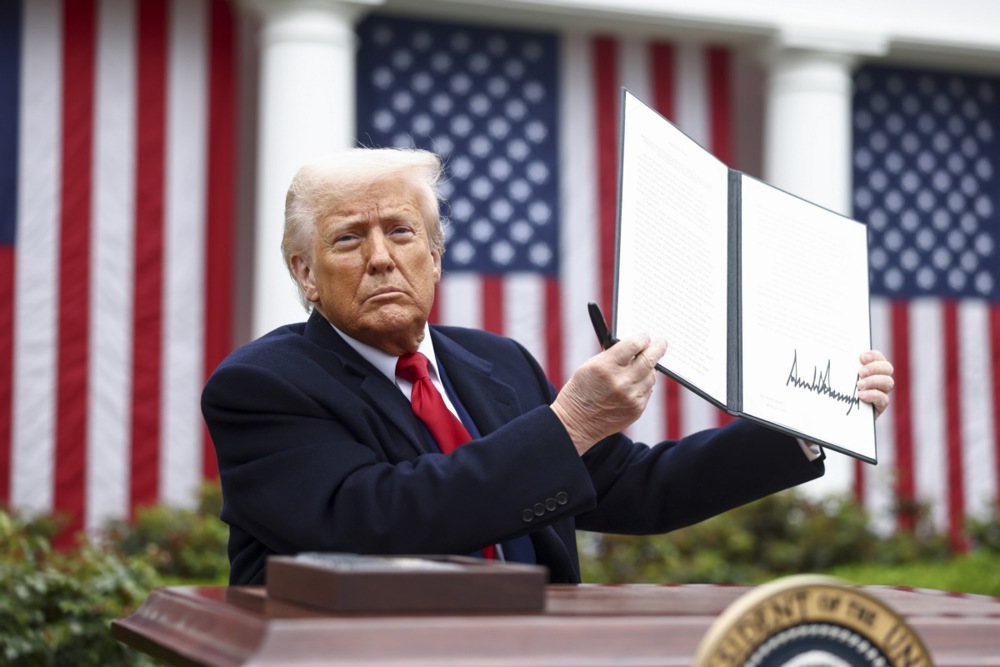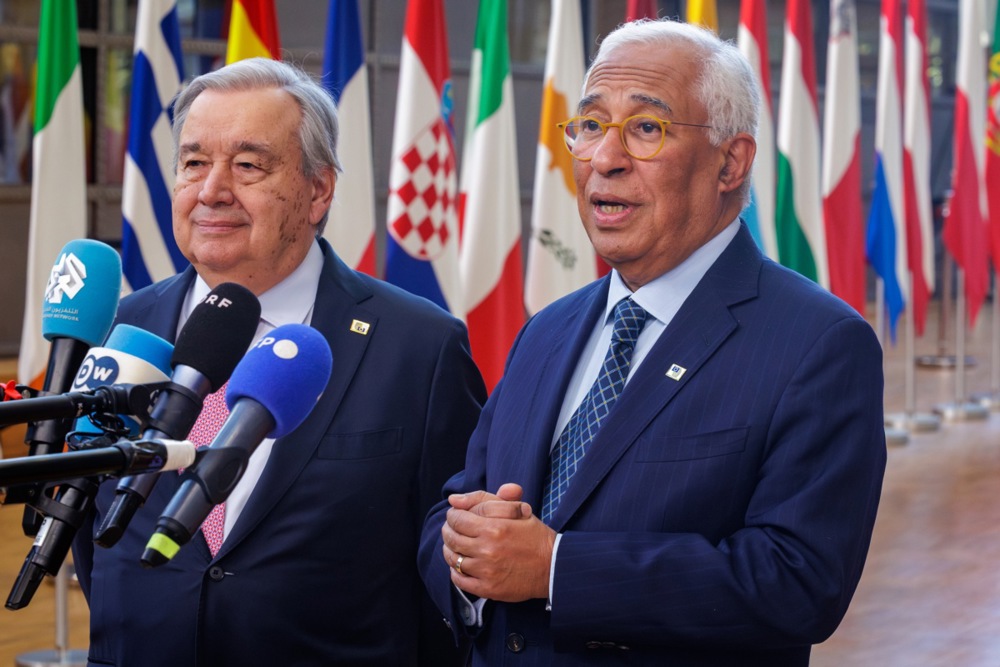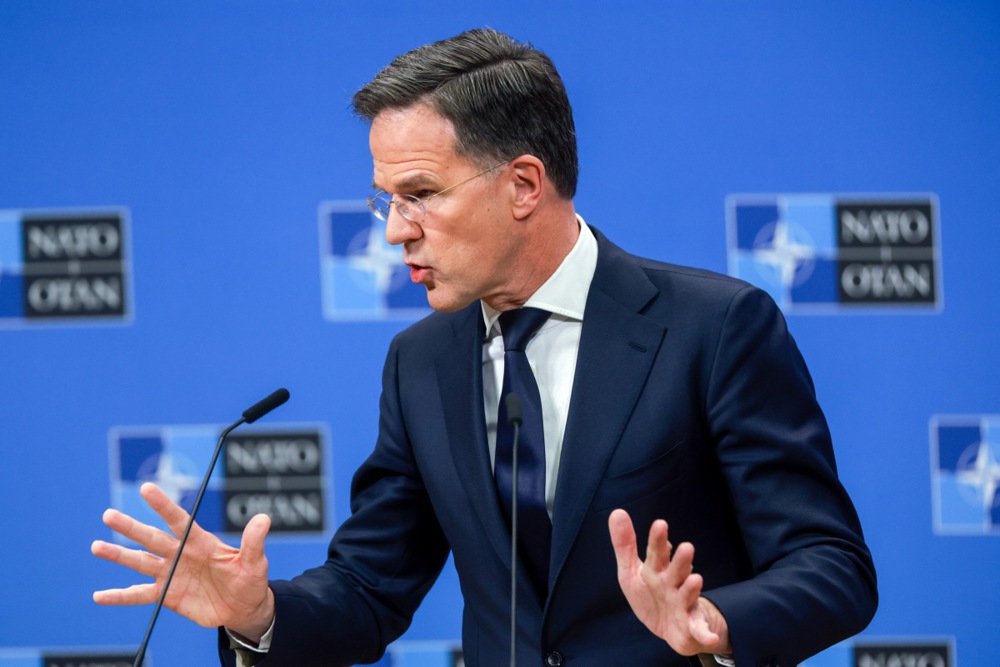During his “Liberation Day” tariffs speech, US President Donald Trump presented a chart detailing those imposed on almost every country.
A few days later, the White House published an explanation for how these tariffs announced on April 2 were calculated – in just a few weeks, it turned out.
Unlike traditional approaches that mirrored customs duties between partners, the method used by the Trump administration calculated tariffs based on broader competitiveness indicators.
These included customs duties, production factor costs and the degree of specialisation in a sector — factors that together determined a country’s trade surplus or deficit.
The result was a tool that justified tariffs in sectors where the US ran a deficit, even in the absence of discriminatory policies.
The stated idea was to use a formula to eliminate persistent trade imbalances, even if that meant imposing a 10 per cent minimum tariff on a country where there was no trade deficit.
It has remained unclear whether non-tariff measures such as the European Union’s Digital Markets Act (DMA), which Trump cited as an important “non-trade barrier” trigger, were included in the model.
The DMA, an EU regulation introduced in 2022, imposed obligations on large digital platforms — termed “gatekeepers” if they meet certain revenue and user thresholds.
The European Commission said the regulation was designed to promote fair competition and innovation regardless of a company’s origin.
It delayed imposing DMA-related fines just a few days after having issued preliminary findings against several US Big Tech companies, when the DMA came into force in March 2025.
Nevertheless, on April 2, the Trump administration unveiled sweeping tariffs affecting almost every major trading partner, including the EU.
On April 3 in Washington, Andrew Ferguson – chair of the US Federal Trade Commission and a Trump appointee – said: “The fines under the DMA are not tied to the business being conducted by the firm in Europe. It starts to look like the DMA is sort of like a form of taxing American companies.”
He added, “I am very suspicious of laws that appear to have been written to get at American companies abroad. I definitely do not want the Europeans basically levying taxes on American firms no matter what the conduct is.”
EU competition chief Teresa Ribera, when asked if she would take bold action under the DMA, responded: “Of course I’m going to be brave. I am bound by the law.”
The calculation of these tariffs was presented by the US Office of the Trade Representative as straightforward maths, yet hid more complexity.
The official approach took the US trade deficit with a given country, divided that figure by the total goods imports from that country and then halved the result, aiming to determine a tariff rate that would theoretically drive the bilateral trade balance to zero.
To fine-tune this, the model incorporated additional factors such as existing customs duties, production factor costs and the degree of specialisation, in an effort to capture a nation’s overall competitiveness.
The US Office of the Trade Representative (USTR) selected parameter values drawing on studies by renowned economists.
This approach, detailed in USTR’s internal briefing slides, was named the “Reciprocal Burden Index” model.
Some economists and industry groups in Europe argued that the model tried to be too precise with too many variables. That could obscure how different national economies actually function, they said, warning that applying a one-size-fits-all formula risked misjudging the causes of trade imbalances.
Critics have argued that these parameters cancelled each other out, rendering the formula overly simplistic and treating very different economies alike.
The formula, European banks reported, was based on a calculation that assumes persistent trade deficits exist not just because of tariffs, but also due to other factors that made it harder for the US to sell goods abroad.
These could include hidden costs such as different rules, cheaper labour, or a country’s heavy focus on certain industries. The model tried to estimate what level of tariffs would be needed to bring trade back into balance, using assumptions about how people and businesses might react to higher prices.
US officials said they had used research showing that raising prices through tariffs could reduce how much US citizens buy from those countries, helping shrink the deficit.
This method, though, did not simply mirror what other countries charge — it reflected the overall competitive edge they had. And because it targeted many countries at once, rather than just one, the impact on prices might be smaller than expected, which in turn was used to justify even higher tariffs.
Critics also argued that the method did not reflect true reciprocity, since it did not just respond to tariffs alone but to a country’s entire trade advantage, regardless of whether it comes from fair competition or not.
As one European analyst put it: “This is less about mirroring what others do, and more about correcting what the US sees as the structural unfairness of global trade.”
Several economists noted that it overweighted cost differentials without adjusting for market size or consumption patterns, the BBC reported on April 3.
Yet US policy adviser Oren Cass, as part of an interview posted on X, pointed out that there was a communication challenge in labelling these measures as “reciprocal tariffs” since the intent was never to mimic foreign tariffs directly but to reflect proportionally the size of the trade imbalance.
Cass noted that even tariffs for “random islands” – simply because they appeared on the harmonised tariff schedule – illustrated the method’s granular design, which he said was a politically transparent way to rebalance a deal long considered unfavourable to US interests.
He said the method was designed not to punish but to correct structural asymmetries that had persisted for decades.





